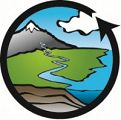CUAHSI Cyberseminar - Jon Chorover on Jemez-Catalina CZO
PRESENTATION/TALK | WEBINAR | EDUCATION/OUTREACH
The Jemez-Santa Catalina CZO: Transformative Behavior of Water, Energy and Carbon in the Critical Zone: Quantifying Linkages among Ecohydrology, Biogeochemistry, and Landscape Evolution
Online
-
Catalina-Jemez, INVESTIGATOR
National
Catalina-Jemez
Links
A CUAHSI cyberseminar is a PowerPoint presentation shown over the web in conjunction with a conference call for narration by the presenter. CUAHSI pays on a connection basis so minimizing the number of connections on each campus is preferable. If time allows, a question and answer period may follow.
The structure of the critical zone (CZ) is a result of tectonic, lithogenic and climatic forcings that shape the landscape over geological time scales. In the southwestern US, systematic climate variation follows elevation gradients that extend from low desert basins to forested upland catchments. We postulate that associated variation in carbon and water flux exerts strong control over CZ evolution, and that quantifying system inputs and fluxes of these constituents leads to predictions of non-linear and threshold effects in CZ structure formation. We are testing this hypothesis in the Jemez-Santa Catalina CZO, which comprises a pair of observatories situated on granite, rhyolite and schist bedrock - in northern New Mexico and Southern Arizona.
This CZO presentation is part of the Fall 2011/Spring 2012 Cyberseminars Theme — "Earth Observatories for Interdisciplinary Science: Reports from Critical Zone Observatories and Water, Sustainability and Climate Studies"
Related Events
Explore Further


